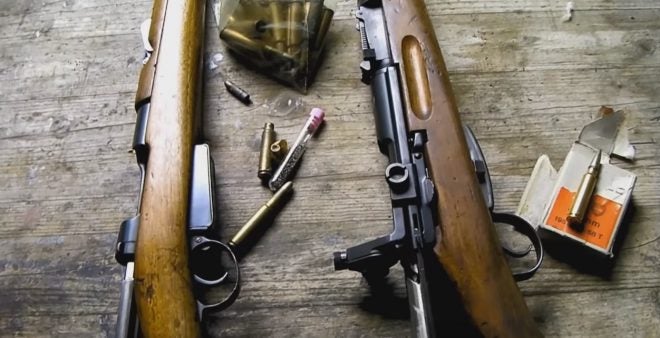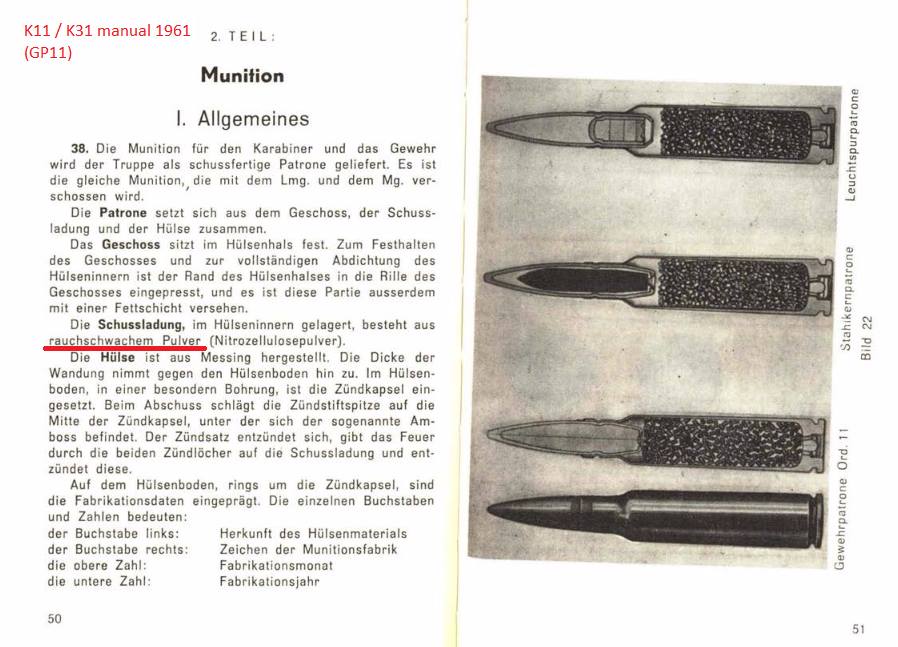Myths may come from many places; one of the most common sources of myths is the gap between languages. Translations, no matter how good, are imperfect, and this is especially true when concerning delicate works like poetry or technical documents.
Even translations between languages that have very well-characterized relationships, like English and German, are subject to errors, and what we’ll be taking a look at today is one such example of a questionable translation from German to English. In German-langage sources from Switzerland, the propellant used by the first generation Rubin-designed .30 caliber 7.5×53.5 GP90 round of the 1889 Schmidt-Rubin rifle is described as rauchschwach, which translates literally to “smoke weak”.
English-speaking translators writing about the Swiss ammunition interpreted this word to mean that the GP90 round used what’s today known as “semi-smokeless” propellant, which describes a variety of propellants intermediate between blackpowder and true smokeless propellants. This semi-smokeless label has been repeated almost universally in English sources, and is now accepted as common knowledge.
However, this translation doesn’t make very much sense. Colonel Rubin, who designed the GP90 round, was by the late 1880s aware of true smokeless nitrocellulose propellants, and indeed was one of the early innovators of them. If this was the case, why in 1889 when nitrocellulose propellants had finally been perfected in multiple countries, would Rubin have settled for far less energy dense hybrid propellants? Further, the exact same term rauchschwach is used in the K11/K31 manual to describe the decidedly smokeless GP11 cartridge:
Was the GP90 really a “semi-smokeless” cartridge? YouTuber Bloke on the Range packed up a couple of Swiss rifles and some original ammunition to settle this matter; the resulting video is embedded below:
That’s MYTH BUSTED for you folks reading along at home! The 7.5×53.5mm GP90 does not use “semi-smokeles” powder, but rather an early extruded and cut nitrocellulose variety, of the kind that has since become extremely common.
Now, a small note is in order. The ammunition Bloke is shooting is 1909-dated GP90/03, which uses a different primer than the original GP90 round. However, every other element (including the paper jacket on the bullet) is the same.
 Your Privacy Choices
Your Privacy Choices


